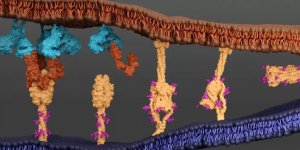| Health / Health News |
Night Owls Face Higher Risk of Type 2 Diabetes
A study led by Dr. Jeroen van der Velde from Leiden University Medical Center has found that individuals with a preference for going to bed late and waking up later, known as late chronotypes, are at a significantly higher risk of developing type 2 diabetes (T2D) than those with earlier sleep patterns.

Night Owls Face Higher Risk of Type 2 Diabetes. Image credit: tasnimnews.com
"Previous research has linked a late chronotype with an unhealthy lifestyle, such as smoking or poor diet, which could explain their higher risk for obesity and metabolic disorders like type 2 diabetes,"
Dr. van der Velde stated. "However, we believe lifestyle factors alone do not fully account for this relationship."
To further investigate, the team analyzed data from over 5,000 participants as part of the Netherlands Epidemiology of Obesity study.
The participants, with an average age of 56 and a mean BMI of 30 kg/m², were divided into early, intermediate, and late chronotypes based on their reported sleep and wake times.
The study found that participants with a late chronotype had a 46% higher risk of T2D compared to those with an intermediate chronotype, even after adjusting for age, sex, lifestyle factors, and total body fat.
"This suggests that other mechanisms, such as circadian misalignment, could be contributing to the increased risk," Dr. van der Velde explained.
The research also revealed that late chronotypes had higher BMI, larger waist circumferences, more visceral fat, and higher liver fat content compared to intermediate chronotypes.
While early chronotypes showed a slightly increased risk of T2D, the difference was not statistically significant. Dr. van der Velde concluded that further research is needed to explore whether changes in lifestyle timing, such as meal and activity schedules, could improve metabolic health in late chronotypes.
The team is involved in the TIMED consortium, which is studying how the timing of sleep, meals, and physical activity affects type 2 diabetes risk.
"Night owls concerned about their risk may benefit from strategies like time-restricted eating, although more research is needed to confirm this," Dr. van der Velde said. (Tasnim News Agency)
YOU MAY ALSO LIKE





